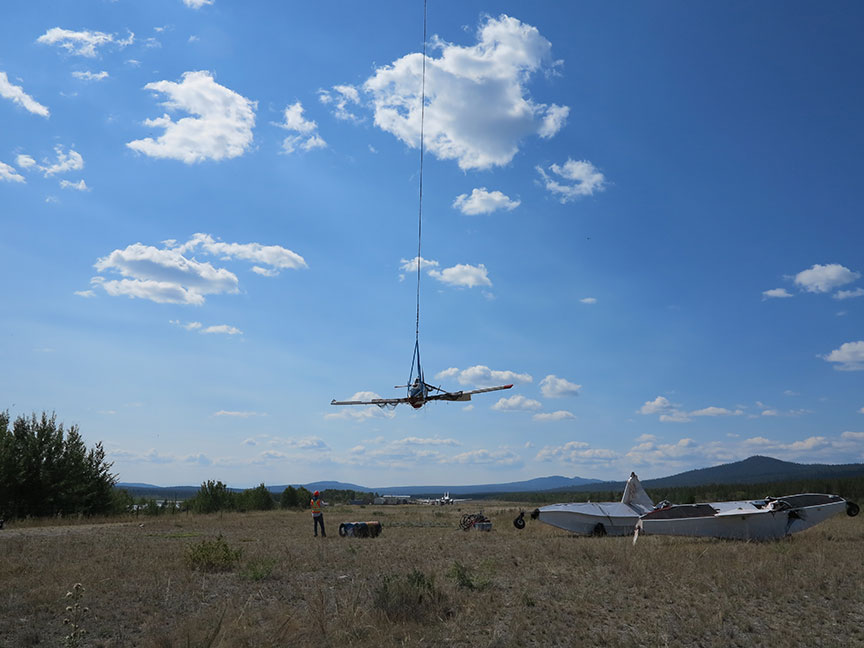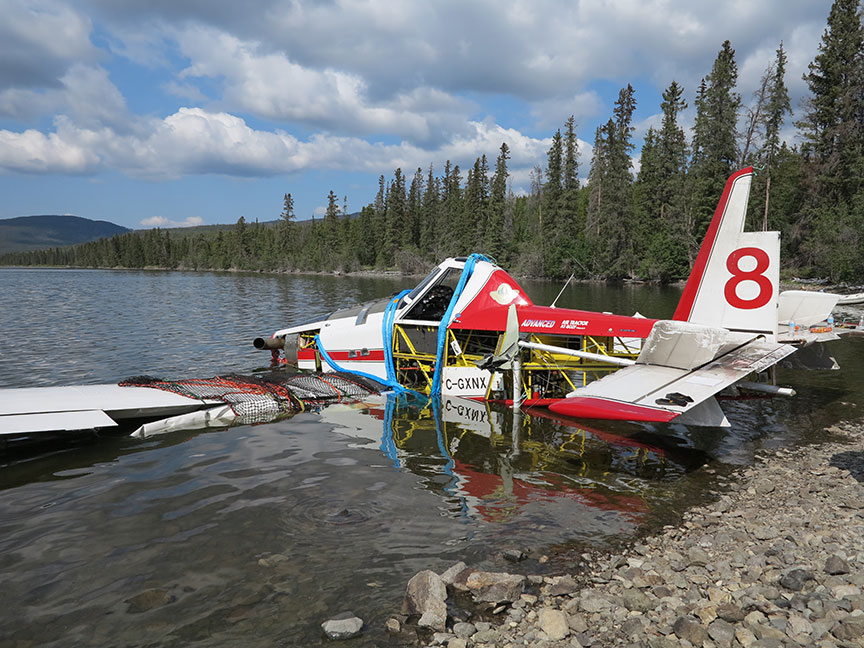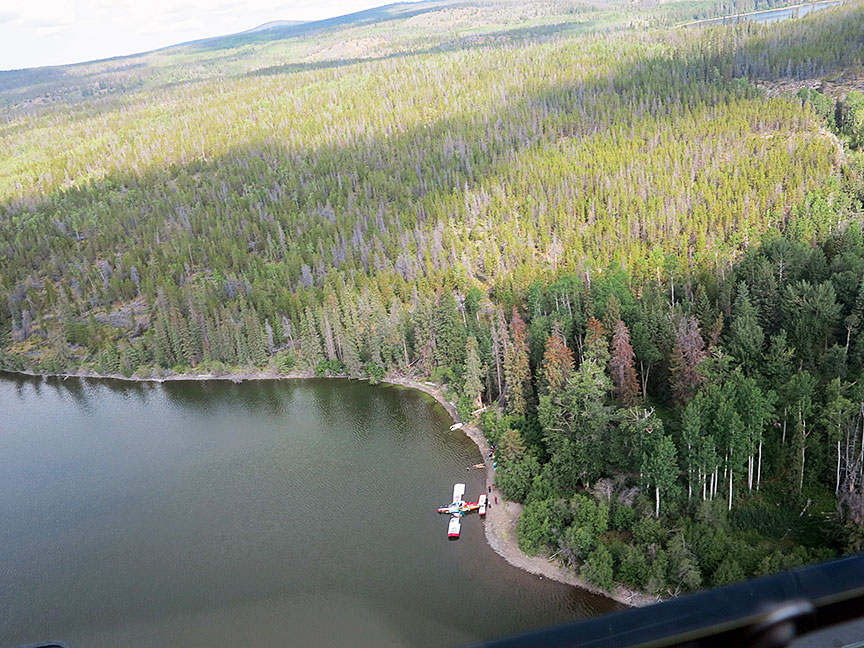Stall at takeoff and collision with water
Conair Group Inc. (dba Conair)
Air Tractor AT-802A Fire Boss Amphibian, C-GXNX
Chantslar Lake, British Columbia
The occurrence
On 14 August 2014, an Air Tractor AT-802A on amphibious floats, C-GXNX, was carrying out wild fire fighting operations off Chantslar Lake, British Columbia along with 3 other aircraft of the same model. C-GXNX was second in the formation on a touch-and-go maneuver to pick up water. Upon lift-off, a control issue occurred and the aircraft struck the water, separated from the floats but remained upright and subsequently sank. The pilot was wearing a helmet, a personal floatation device (PFD) and a 4-point safety harness. The pilot received minor injuries, exited the aircraft on his own and inflated the PFD.
Media materials
News release
Low speed and high takeoff weight contributed to wing stall in August 2014 collision with water on Chantslar Lake, British Columbia
Read the news release
Investigation information
Download high-resolution photos from the TSB Flickr page.
Class of investigation
This is a class 3 investigation. These investigations analyze a small number of safety issues, and may result in recommendations. Class 3 investigations are generally completed within 450 days. For more information, see the Policy on Occurrence Classification.
TSB investigation process
There are 3 phases to a TSB investigation
- Field phase: a team of investigators examines the occurrence site and wreckage, interviews witnesses and collects pertinent information.
- Examination and analysis phase: the TSB reviews pertinent records, tests components of the wreckage in the lab, determines the sequence of events and identifies safety deficiencies. When safety deficiencies are suspected or confirmed, the TSB advises the appropriate authority without waiting until publication of the final report.
- Report phase: a confidential draft report is approved by the Board and sent to persons and corporations who are directly concerned by the report. They then have the opportunity to dispute or correct information they believe to be incorrect. The Board considers all representations before approving the final report, which is subsequently released to the public.
For more information, see our Investigation process page.
The TSB is an independent agency that investigates air, marine, pipeline, and rail transportation occurrences. Its sole aim is the advancement of transportation safety. It is not the function of the Board to assign fault or determine civil or criminal liability.


